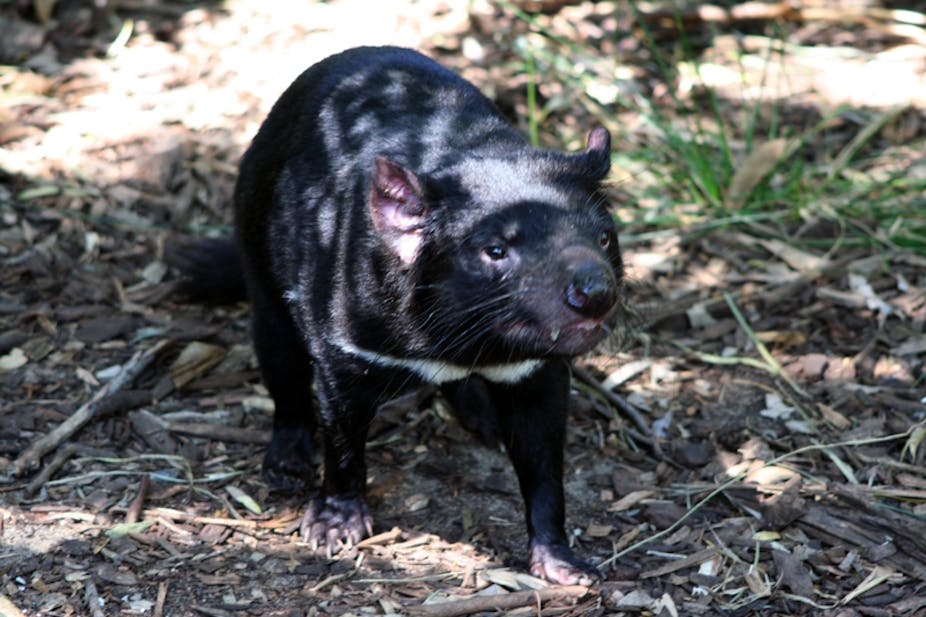A Tasmanian devil genome mapping project by U.S. researchers has revealed how a tiny gene pool helped spread a deadly facial tumour disease throughout the population but also uncovered the first ever devil whose immune system tried to fight it off.
The endangered Tasmanian devil population has been decimated by Devil Facial Tumour Disease, which is spread by biting and eventually covers the face with cancers. The animal usually dies of suffocation or starvation.
Since the disease was first noted by a wildlife photographer in 1996, the devil population has fallen by 60% due to the species’ apparent inability to mount an immune response once infected.
However, a research project by Pennsylvania State University in the U.S. has offered new hope for those hoping to save the species from extinction.
In a paper published by the U.S. journal Proceedings of the National Academy of Sciences, a team led by biochemist Stephan Schuster sequenced the genomes of two Tasmanian devils – one from Tasmania’s south-east, named Spirit, and one from the north-west, named Cedric.
The researchers found that, despite the distance between their habitats, the two animals were genetically very similar and differed in only 915,000 sites on the genetic map.
“The inability to mount an immune response and to reject these tumors might be caused by a lack of genetic diversity within a dwindling population,” the researchers reported, noting that studies on museum specimens suggested the gene pool had been tiny for over 100 years.
“Using a genetically characterized breeding stock based on the genome sequence will enable preservation of the extant genetic diversity in future Tasmanian devil populations,” the paper said.
Despite the similarities, the devil from the north-west, Cedric, was able to fight the infection initially.
“He was the very first devil to be able to mount an immune response against a vaccine,” said Katherine Belov, an Associate Professor in Animal Genetics from the University of Sydney’s School of Veterinary Science.
Cedric was infected several times with the disease and eventually did succumb but his immune system’s initial resistance has excited scientists who study Tasmanian devils.
“That’s what we are really interested in. What is it about some devils in the north-west that seem to be a little more resilient to the disease?” said Associate Professor Belov, who was not involved in the genome mapping project.
“In the east, 90% of the animals there have the disease. But in the north-west, it’s very small numbers, smaller than 20%,” she said.
“We think the difference in genetics between eastern and north-western devils is really important. These two [mapped] genomes give us the opportunity to get in there and work out what it is exactly about these genetic differences that affects the way they respond to the disease.”
She said hunting by humans probably contributed to the tiny gene pool problem that devils face.
“But devils have been isolated in Tasmania for the last 12,000 years, since the last Ice Age and we know in the last 100 years there have been at least three big population collapses,” she said.
The low level of genetic diversity has weakened the species’ ability to fight infection because the body doesn’t recognise the invading disease as an outsider.
“In humans, there’s enough genetic diversity there so if you took cells from me and put them in you, your immune system would try to find them off. But with most devils that doesn’t happen.”

